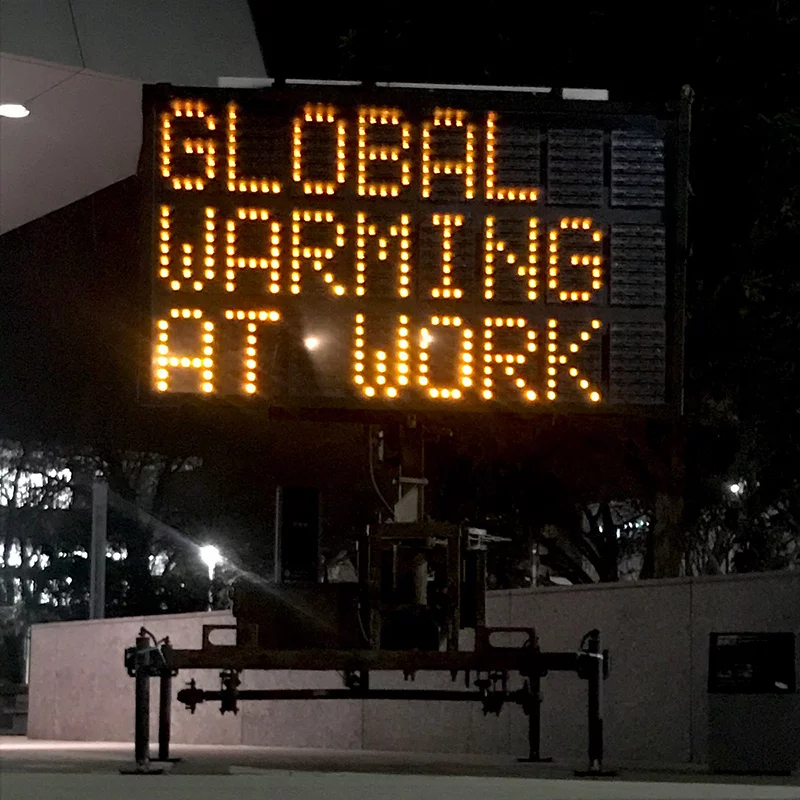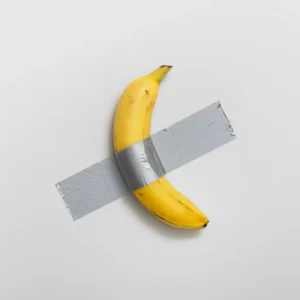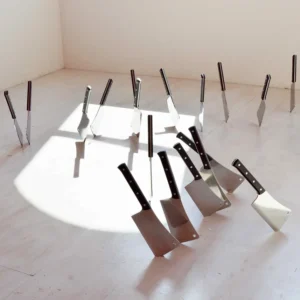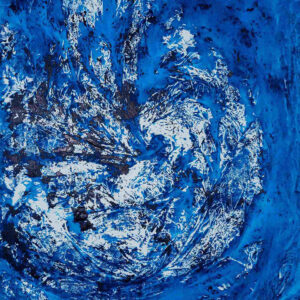We are living in the so-called Anthropocene era that is marked by the superiority with which human beings treat nature. One way to ensure environmental protection is to promote sustainable art. Born at the beginning of the 21st century, the artistic genre aims to denounce the actions that degrade our environment. These works of art can help to spread the word about environmental issues as well as promote positive impact in society.
There are several aspects of sustainable art including the genre “climate change art”. This term was created to define art inspired by climate change and global warming. It goes without saying that artists also create art in a socially, economically, and environmentally responsible way by using nature-friendly materials.
Although sustainable art and climate change art may seem like new concepts, artists around the world have actually been addressing the climate change debate in their work for some years now. Through a wide variety of mediums such as painting, sculpture, installation, video, and performance, artists have been engaging in complex conversations in the global arena.
Climate Change Art Installations
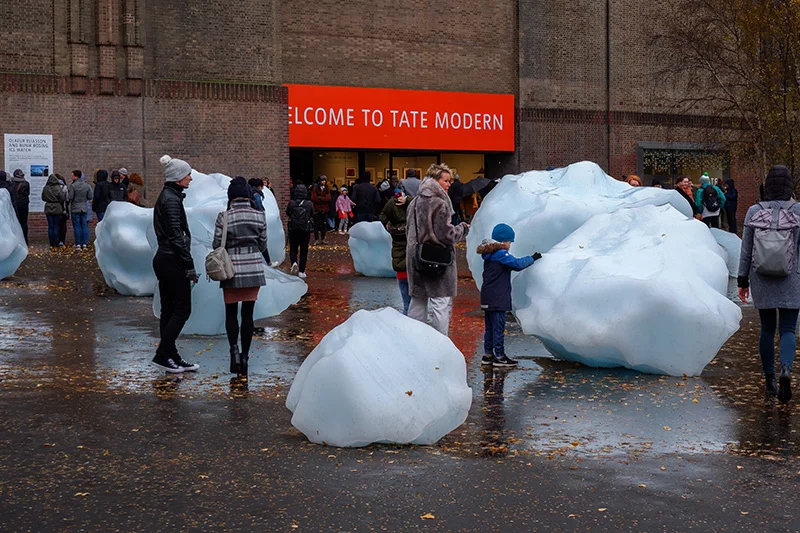
Olafur Eliasson: Ice Watch, 2015
The Icelandic artist Olafur Eliasson has sought to interact with visitors and raise awareness to climate change by building a clock made of blocks of ice in one of the busiest squares in Paris, the Place du Panthéon. The ice, which came from real icebergs in Greenland, was intended as a metaphor for the urgent need for action to address climate change. Through the emphasis on ice that melted over a few days, Eliasson wanted to send a clear message: “we do not have time”. The sustainable artist was alluding to the IPCC reports, which state that we only have 12 years to limit the effects of climate change. On the occasion of COP24 in 2018, Olafur Eliasson reproduced this artwork in front of Tate Modern in London.
John Gerrard: Western Flag, 2019
Exhibited during COP25, Western Flag by Irish artist John Gerrard recreates the site where the first oil field was drilled in Texas in 1901.
The sustainable art installation is a realistic simulation of a flag composed of an uninterrupted emission of black smoke. During its continuous projection, the image is constantly changing so that what the visitor contemplates is never the same.
According to Gerrard, the work is not an image, but information about how pollution affects us. It is a piece of “5,000 lines of code” that the Irishman created for a British Channel 4 awareness campaign.
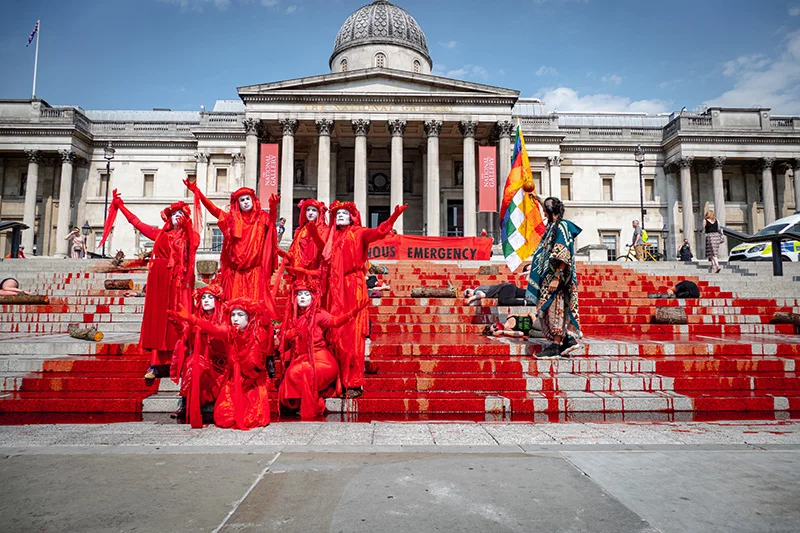
Extinction Rebellion: Floating House on the Thames, 2019
An activist group, Extinction Rebellion placed a floating structure of a house half-sunk in the water on the River Thames. This large-scale performance and installation art aims to send an important message to the UK government: urgent changes are needed to combat the looming problems caused by rising tides and global warming. The multidisciplinary group is also known for their funeral protest performance on behalf of the planet and its species.
Pekka Niittyvirta and Timo Aho: Lines (57° 59′ N, 7° 16’W), 2017
Through a line of light on houses, the Finnish sustainable artists Pekka Niittyvirta and Timo Aho point out the height to which the water could reach in Scotland if climate change is not stopped in time. The use of light refers to a profound metaphor: depending on human actions, humanity will face a pessimistic future that is underwater, or an optimistic one, in which people will start to take the issue of climate change seriously.
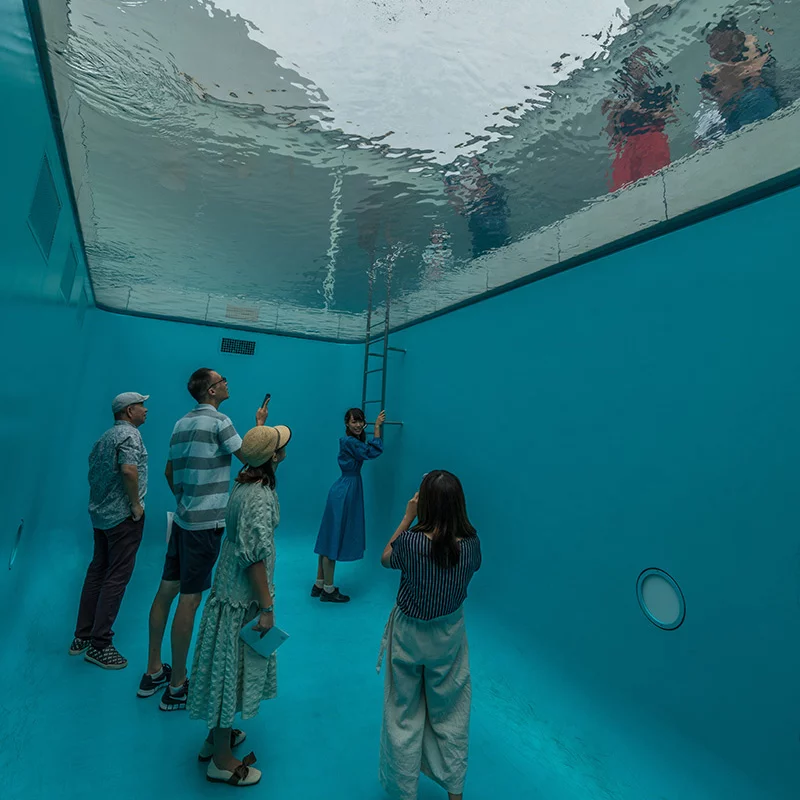
Leandro Erlich: Order of Importance, 2019
This site-specific installation of sustainable art by Argentine artist Leandro Erlich was presented at the beach during Miami Art Week. The sculptural installation of 66 life-size cars and trucks queue up in an imaginary place enveloped in sand. The work conveys a sense of fragility in the face of a possible premonition about the future of civilization.
Fabrice Monteiro: The Prophecy, 2013
Through this photographic series, the Belgian-Beninese sustainable artist captures a terrifying future vision and the potential decay we will face in the coming years. Monteiro is able to create incredible and dystopian scenarios thanks to the interplay between light and shadow, reflecting the dramatization of reality and fantasy combined.
The aim of this project is to raise awareness to ecological disasters caused by global warming and human overexploitation. The artist uses real landscapes of destruction and introduces spiritual figures covered with plastic waste and waste generated by consumers.
Quatre Caps: No Longer Life, 2019
This project of sustainable art reinterprets classic still life paintings with current products with the aim of raising awareness to plastic pollution that affects our daily lives. In this contemporary photography project, it is possible to see the unnecessary and absurd amount of plastic that is used on a daily basis to wrap fruits and vegetables that, in most cases, already have their “natural wrapping”.
It is also an allegory for the brevity of life, since many of these foods are processed and packaged to hold intact much longer than they do naturally, and their freshness depends not so much on their appearance, but on the expiration date printed on the package.
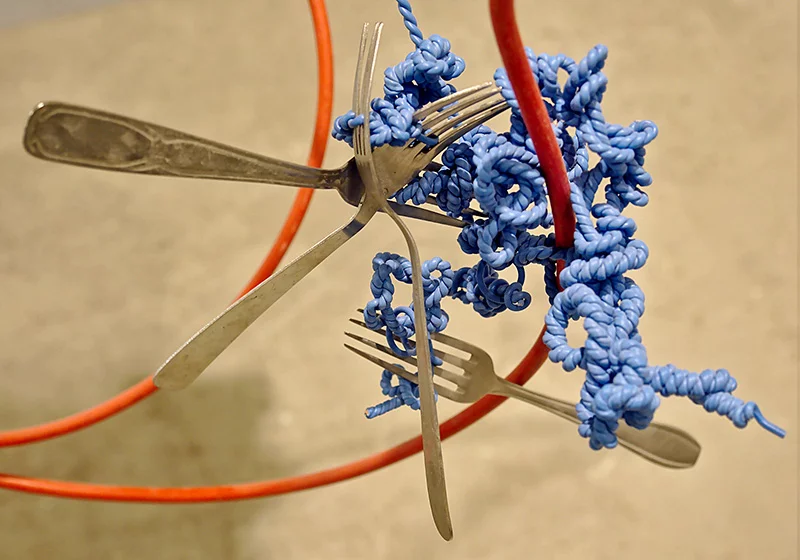
Art has historically been able to communicate what is not visible to reason. The emotional impact that art generates is fundamental to understand the complex situation of our planet at this moment, and to change behaviors.
It has been almost 40 years since the UN created the World Commission on Environment and Development and its guidelines for a sustainable future in 1983. Today, the environmental situation is worse than ever. Fostering a global dialogue, climate change artists incite awe and inspiration through their work with the ultimate goal of saving our planet. It is not too late to listen to them now.

